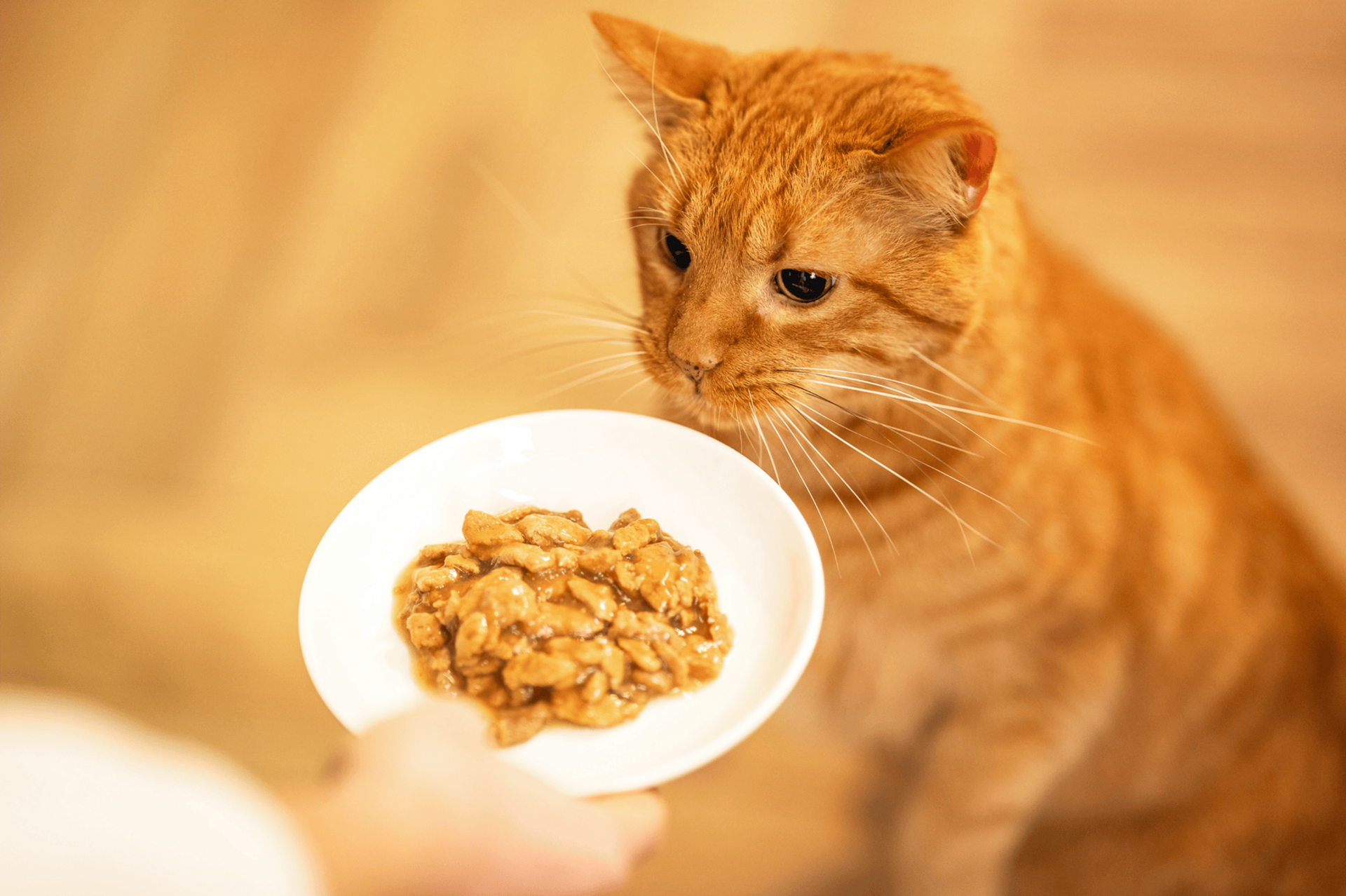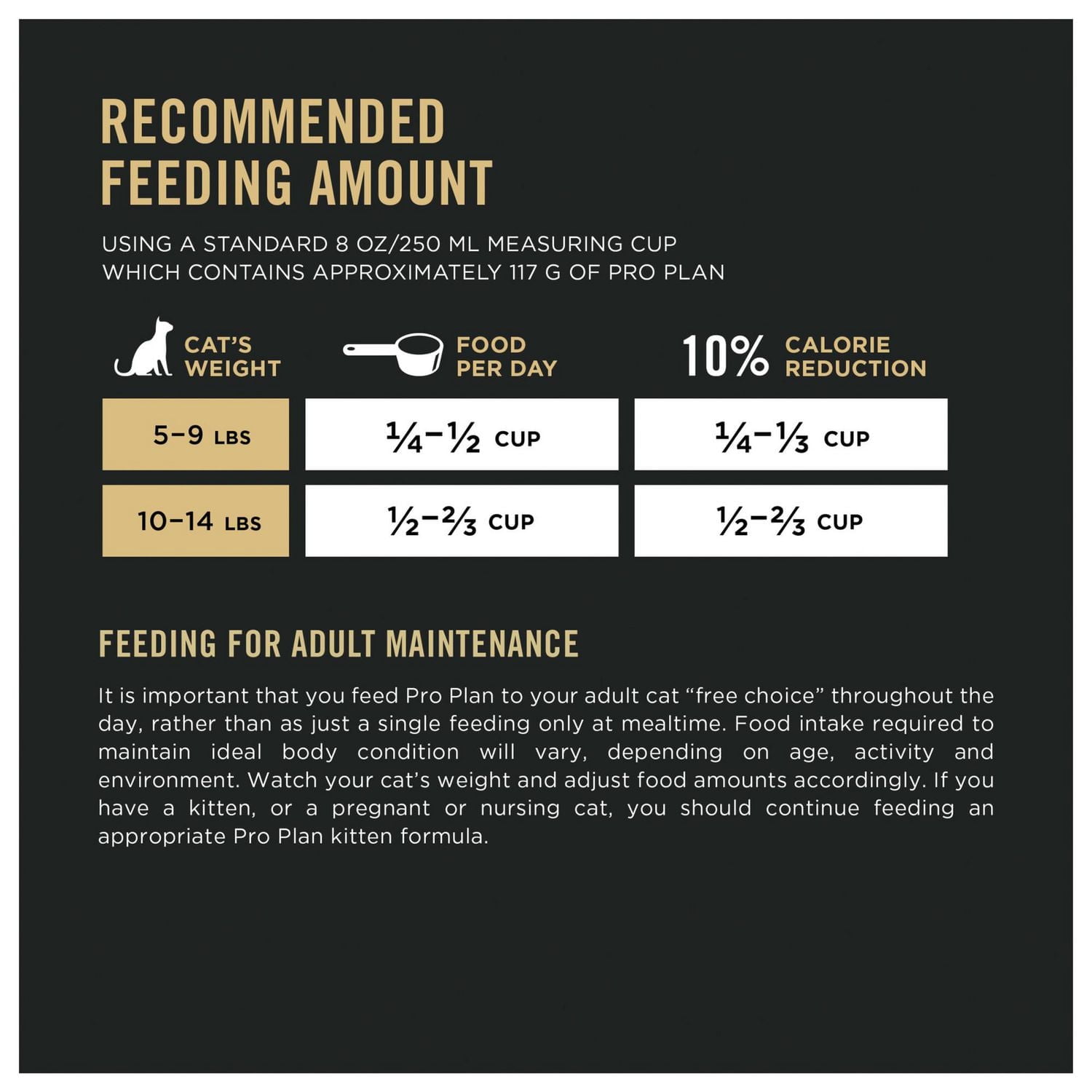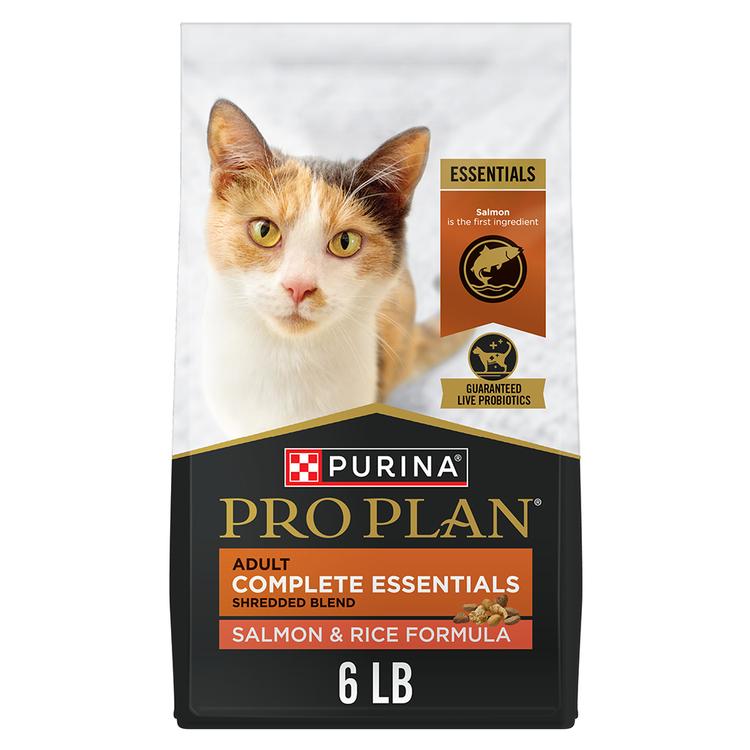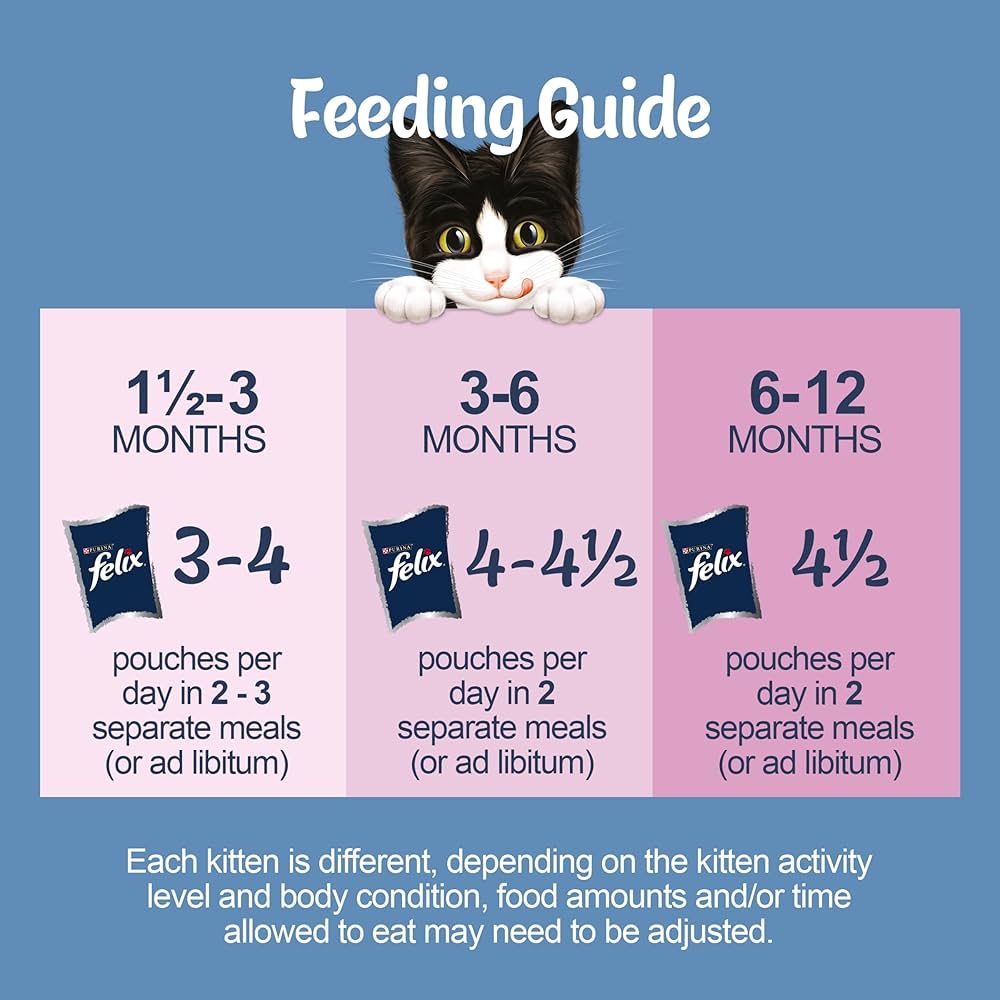Are you wondering if you’re feeding your cat the right amount each day? Knowing how much food your cat needs is key to keeping them healthy and happy.
Too much or too little can cause problems you don’t want to face. You’ll discover simple guidelines that help you give your furry friend just the right portion every day. Keep reading to learn how to make sure your cat stays fit, energetic, and full of life.

Credit: iams.eu
Daily Calorie Needs
Cats need the right amount of calories daily to stay healthy. Calories are the energy cats get from food. This energy supports their body functions and activity. Knowing how many calories your cat needs helps you feed them properly. Feeding too much or too little can cause health problems. Understanding daily calorie needs is important for every cat owner.
Factors Influencing Calorie Requirements
Several things affect how many calories a cat needs:
- Size and weight:Bigger cats need more calories.
- Breed:Some breeds have faster metabolisms.
- Activity level:Active cats burn more energy.
- Health status:Illness can change calorie needs.
- Neutered or spayed:These cats usually need fewer calories.
Each cat is different. Adjust their food based on these factors.
Calories By Age And Activity Level
Kittens need more calories than adult cats. They are growing and very active. Around 200-250 calories per day is typical for kittens.
Adult cats usually need 20 calories per pound of body weight. A 10-pound cat may need about 200 calories daily.
Senior cats need fewer calories. Their activity slows down. Around 15 calories per pound is enough.
Very active cats or outdoor cats may need extra calories. Less active or indoor cats need fewer calories.
| Cat Type | Calories per Pound | Example for 10 lb Cat |
|---|---|---|
| Kitten | 20-25 | 200-250 calories |
| Adult (Indoor) | 15-20 | 150-200 calories |
| Adult (Active/Outdoor) | 20-25 | 200-250 calories |
| Senior | 15 | 150 calories |

Credit: www.walmart.ca
Types Of Cat Food
Choosing the right type of food for your cat is a key step in managing how much they should eat daily. Each type of cat food offers different benefits and challenges that can affect your cat’s health and appetite. Understanding these options helps you make smarter feeding choices tailored to your cat’s needs.
Dry Food Benefits And Drawbacks
Dry cat food is popular because it’s easy to store and serve. It often costs less and has a long shelf life, making it convenient for busy pet owners.
However, dry food usually contains more carbohydrates and less moisture, which might not be ideal for cats with urinary or kidney issues. Have you noticed if your cat drinks more water when eating dry food? That’s an important sign to watch.
Wet Food Advantages
Wet food contains high moisture content, which supports hydration and can help prevent urinary problems. It’s often more appealing to cats due to its texture and stronger aroma.
Feeding wet food can help control your cat’s calorie intake because it’s less energy-dense than dry food. But keep in mind, wet food can spoil quickly once opened, so you need to feed it promptly and store leftovers carefully.
Raw And Homemade Diets
Raw and homemade diets allow you to control exactly what your cat eats, often leading to fresher, less processed meals. Many cat owners report improved coat shine and energy after switching to these diets.
However, preparing balanced raw or homemade meals requires careful planning to avoid nutrient deficiencies. Have you consulted with a vet or pet nutritionist before trying this? It’s crucial to ensure your cat gets all essential nutrients safely.
Portion Sizes For Cats
Getting the portion sizes right for your cat is key to keeping them healthy and happy. Overfeeding can lead to obesity, while underfeeding might leave your cat lacking energy. Knowing how much to feed ensures your furry friend maintains a balanced diet without any guesswork.
Measuring Food Accurately
Using a kitchen scale or a measuring cup helps you give your cat the exact amount of food they need. Dry kibble is easier to measure precisely compared to wet food, which can vary in density. If you rely on scoops, make sure they are consistent in size to avoid accidental overfeeding.
When I started weighing my cat’s meals, I noticed a big difference in her weight management. It made me realize how easy it is to misjudge portions by eye alone. Have you ever wondered how much your cat’s bowl really holds?
Adjusting Portions Based On Weight
Your cat’s ideal portion depends largely on their current weight and activity level. If your cat is overweight, reducing daily portions gradually can help shed pounds safely. Conversely, an underweight cat may need slightly larger or more frequent meals to reach a healthy size.
Keep an eye on your cat’s body condition and adjust food amounts every few weeks. A simple rule is to feed less if your cat is gaining too much weight or more if they seem too thin. How often do you check if your cat’s portion size still fits their needs?
Feeding Frequency
Feeding frequency is an important factor in a cat’s daily diet. It affects digestion, energy levels, and overall health. Cats have different needs based on their age and lifestyle. Setting the right feeding schedule helps maintain a healthy weight and prevents overeating. Understanding how often to feed your cat supports their wellbeing.
Kittens Vs Adult Cats
Kittens need more frequent meals than adult cats. Their small stomachs cannot hold much food at once. They grow fast and burn energy quickly. Feeding them 3 to 4 times a day keeps their energy steady. It also supports healthy development.
Adult cats digest food slower and have lower energy needs. Most adult cats do well with 2 meals per day. Feeding twice daily matches their natural hunting patterns. It helps keep their weight stable and prevents hunger.
Free Feeding Vs Scheduled Meals
Free feeding means leaving food out all day. Cats eat small amounts whenever they want. This works for some cats but can cause overeating. It may lead to weight gain and health issues.
Scheduled meals give your cat food at set times. This method helps control portion size and food intake. It encourages routine and can improve behavior. Scheduled feeding suits cats that need weight management.
- Free feeding:convenient, risk of overeating
- Scheduled meals:portion control, better routine
Special Considerations
Feeding your cat isn’t just about offering a standard portion size. Special circumstances can change how much your feline friend needs each day. Understanding these unique situations helps you provide the right nutrition and avoid health problems.
Cats With Health Issues
Some cats face health challenges that affect their appetite and nutritional needs. Conditions like diabetes, kidney disease, or obesity can require tailored feeding plans. You might notice your cat eating less or more than usual, which signals a need to adjust their diet.
Consult your vet to determine the right food type and portion size for your cat’s condition. For example, a cat with kidney disease often needs food lower in protein and phosphorus. Tracking your cat’s weight and energy levels regularly helps you fine-tune their daily intake.
Pregnant And Nursing Cats
Pregnant and nursing cats have higher energy demands. They need extra calories to support their growing kittens and milk production. You’ll likely find your cat eating significantly more during this time.
Offer multiple small meals throughout the day instead of one or two large ones. This approach keeps energy levels steady and supports digestion. Ensure the food is rich in protein and essential nutrients to meet their increased needs.
Have you noticed your cat’s appetite changing during pregnancy or nursing? Adjusting their food quantity thoughtfully can make a big difference in their health and the kittens’ development.
Signs Of Overfeeding And Underfeeding
Recognizing signs of overfeeding and underfeeding helps maintain your cat’s health. Proper food intake supports energy, growth, and overall wellness. Watch for changes in weight and behavior. These clues reveal if your cat’s diet meets its needs.
Weight Changes To Watch
Weight gain often signals overfeeding. Cats may become overweight or obese, increasing health risks. Sudden weight loss can mean underfeeding or illness. Track your cat’s weight weekly. Consistent weight helps confirm proper feeding amounts.
- Notice if your cat looks rounder or heavier.
- Check for visible ribs or a thin frame.
- Use a scale or vet visits to monitor weight.
Behavioral Indicators
Behavior changes often show feeding issues. Overfed cats may become lazy or less active. They might also beg for food despite having eaten. Underfed cats tend to be restless or vocal. They may search for extra food or seem hungry.
- Watch for unusual hunger signals or constant begging.
- Look for lethargy or lack of play in overweight cats.
- Observe if your cat seems weak or less energetic.
Tips For Successful Feeding
Feeding your cat the right amount of food requires more than just measuring portions. Consistency and quality play key roles in keeping your cat healthy and happy. Follow simple tips to make feeding time smooth and effective.
Creating A Feeding Routine
Feed your cat at the same times each day. Cats thrive on routine. Set specific meal times and stick to them. Avoid free feeding, which can lead to overeating. Offer measured portions to control food intake. Clean the feeding area regularly to keep your cat comfortable. Watch your cat’s behavior to adjust portion sizes if needed.
Choosing Quality Food
Select food with high protein content and balanced nutrients. Look for named meat sources as the first ingredient. Avoid foods with too many fillers like corn or soy. Wet food can help with hydration. Dry food supports dental health but must be balanced with water intake. Consult your vet to pick the best food for your cat’s age and health needs.

Credit: www.purina.com
Frequently Asked Questions
How Much Food Does An Average Cat Need Daily?
An average adult cat typically needs about 200-300 calories per day. This varies by age, weight, and activity. Portion sizes should be adjusted accordingly to maintain a healthy weight.
How Often Should I Feed My Cat Each Day?
Most cats should be fed two to three times daily. Consistent meal times help regulate digestion and prevent overeating. Kittens may require more frequent meals.
Does A Cat’s Age Affect Daily Food Intake?
Yes, kittens need more calories for growth, while senior cats need fewer. Adjust feeding amounts based on your cat’s life stage and health.
Should I Measure My Cat’s Food Portions Precisely?
Yes, measuring food ensures your cat receives the correct calorie intake. Avoid free-feeding to prevent obesity and promote healthy eating habits.
Conclusion
Feeding your cat the right amount is vital for health. Every cat is different. Age, weight, and activity level matter. Consult your vet for precise guidance. Always ensure fresh water is available. Monitor your cat’s weight regularly. Adjust food intake if necessary.
A healthy diet means a happy cat. Pay attention to their needs. Observe changes in behavior or appetite. These can signal health issues. Keep your furry friend content with balanced meals. Your cat’s well-being should be a priority. This builds a stronger bond.
Enjoy the companionship of your well-fed cat.

